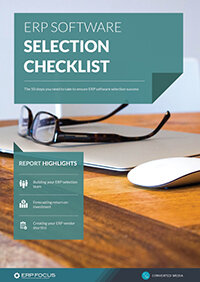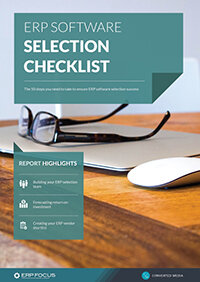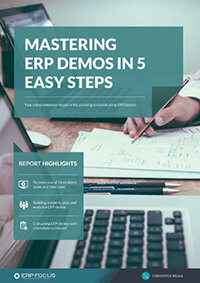3 Challenges for Businesses Selecting ERP in 2016
As noted humorist Charles Schultz once suggested, “Don't worry about the world coming to an end today. It is already tomorrow in Australia.” While the snark may appear non sequitur to challenges associated with selecting ERP in 2015, when it comes right down to it, his view offers a fair approximation of the translucent nature of challenges derived by ‘tomorrow’; and its projected impacts in the case of “newer, bigger, or faster’ ERP platforms.
I use the word ‘translucent’ purposefully. Light can be passed through a plane yet still mask most details associated therein; seems a pretty apt way to describemost ERP selection projects, which are usually fraught with more rather than fewer potholes. So, once again into the breech dear friends; but as usual, hang on because the experience is likely to offer a bumpy ride.
1. Mobility
According to a recent Gartner Research report on the growth of Enterprise ERP mobility, “…the proliferation of (today’s) mobile devices represents a real opportunity to increase the penetration of ERP for all types of workers -- in healthcare, manufacturing, finance, even charity organizations -- and overcome some of the resistance to ERP usability. However, deploying ERP on mobile devices presents many challenges, due to the rapidly evolving mobility device and app landscape.
Recommended Reading: ERP Selection Survival Guide - The 10 Proven Steps You Should Know About ERP Selection
Mobility does not come free from the ERP vendors. It requires expensive upgrades to their newest technology platforms and constant patching as the vendors deliver functionality a little bit at a time.”
This last little bit of news is really where the rubber hits the road, since attempting to ‘integrate’ typically thin, yet highly specific app variants can offer their own kinds of development hell when trying to decide on one mobile ERP approach versus another.
2. Flexibility
In the case of ERP selection decision making, there are really only two ways to go these days; either go on-premise, and thereby own and manage the entire ERP operations constellation, or go with a cloud-based platform, which offers its own long list of pros and cons.
Given the density of today’s ERP media buzz, one might believe that on-premise ERP represents a flightless flock of Dodos who are just about ready to get eaten by a pack of ravenous velociraptors. However, on-premise systems still make sense for enterprise use for a host of reasons, if for no other reason than continual and expanding threats associated with external data security breeches.
In the case of decisions based on overall systems flexibility the two competing systems approaches must always come down to a businesses’ subjective view of what is and isn’t a threat or cost effective, derived from the needs of a specific set of their operations.
On the upside cloud ERP flexibility generally offers quick system launches and implementations, thin internal maintenance requirements, the offer of expanded scalability on-demand, and assumed 24/7/365 support; although in the latter case this particular ‘value’, can sometimes trigger as many potential problems as it resolves.
Overall flexibility cannot exist without stability, so stability must always be considered a first principal when ERP-dependent requirements are present.
On the downside of cloud ERP, the aforementioned data security threat is pervasive and growing, particularly when it comes to large-scale enterprises’ like public Fortune 500/1000 companies; or governmental bureaucracies as recently illustrated by the massive hack carried out on the U.S.’ Office of Personnel Management. In the case of this value proposition, then, a premise of Caveat Emptor must always apply.
When it comes to an ERP selection, flexibility can still be the safer bet for a small or mid-sized Enterprise ERP selection. Overall flexibility cannot exist without stability, so stability must always be considered a first principal when ERP-dependent requirements are present.
3. Cost-To-Complete
Whenever Cost-to-Complete considerations apply within an ERP selection process, one should not simply investigate the more obvious issues of implementation, launch, training, and recurrent management, with an overall eye toward TOC; but also apply an X-factor representing overall time plus overall cost; plus the addition of overall enterprise will.
At the end of the day, we cannot assume science and technology alone will ever ensure a successful ERP selection outcome.
In this event I don’t mean validating an enterprise implementation project/cost schedule on paper, but the ‘real’ and often-overlooked emotional effort involved in successfully integrating and subsuming a full-fledged ERP system within a company culture. This particular gotcha alone has triggered more ERP failures than Apple sells phones.
All of these ERP selection and implementation failures involved internal and highly-empirical impediments to be overcome. Corporate leadership from the top to the bottom rung of each management cadre didn’t deliver visceral fortitude enough to get the ball across the goal line.
At the end of the day, we cannot assume science and technology alone will ever ensure a successful ERP selection outcome. Unless a particular enterprise culture is ready to commit whatever needs to be done, whenever it comes time to do it, they will face these challenges throughout 2016.
Free white paper

60-Step ERP Selection Checklist
Get the comprehensive checklist for your ERP selection project

Featured white papers
-

ERP Software Pricing Guide
Get the latest pricing information on over 80 popular ERP systems, and learn how to budget for your ERP project in our free guide
Download -

60-Step ERP Selection Checklist
Get the comprehensive checklist for your ERP selection project
Download -

ERP Demo Guide & Scorecard
Master your ERP demo with 5 easy steps using our free guide (includes demo scorecard)
Download
Related articles
-

The best ERP systems for process manufacturing
Consider these ERP systems when selecting your next process manufacturing ERP
-

CMMC Compliance: What Aerospace and Defense Manufacturers Need to Know
Key insights on CMMC compliance, deadlines, and securing DoD contracts with CMMC 2.0 certificatio...
-

5 ERP pricing definitions you need to understand
Have you mastered the ERP pricing lexicon yet? Getting to grips with these five definitions is a ...

